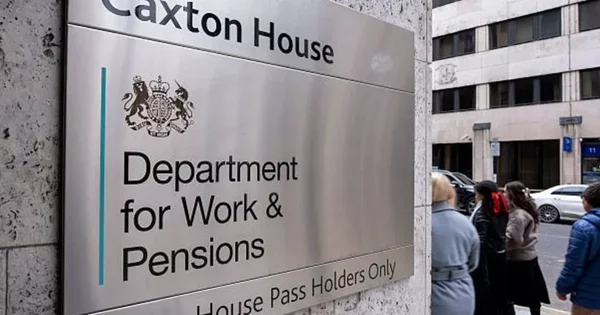Right to the Point
Every limited company in the UK needs a Unique Taxpayer Reference number for tax purposes. This 10-digit code is your company’s tax identity card.
Your UTR is crucial for filing tax returns, communicating with HMRC, and avoiding penalties that could hurt your business. This number is also crucial for maintaining accurate company records and ensuring compliance with tax obligations.
Many directors confuse personal and company UTRs. This can lead to compliance issues and misdirected tax payments. Getting to grips with your company’s UTR early saves headaches during tax season. It ensures smooth tax administration for your business. Tracking the company's UTR number is an essential element for managing the company's tax affairs effectively.
The UK’s first personal tax app, Pie.tax, links directly with your UTR to make tax filing straightforward. Or if you’re just here to get to grips with it all, let’s break it down!
What exactly is a limited company UTR number?
A limited company UTR is a 10-digit number HMRC assigns to your business. Think of it as your company’s tax ID that stays with it for life.
This number is completely separate from any personal UTR you might have as a director. Your business is its own tax entity with its own identifier. HMRC automatically issues your company UTR after you register with Companies House. It typically arrives in a letter marked CT41G about 2-3 weeks after incorporation. Each new company is assigned a unique UTR by HMRC upon registration.
You’ll need this number for all your company’s tax dealings. It’s especially important when filing your annual Corporation Tax return. The UTR is often printed under the heading 'Official Use' on HMRC correspondence.
I remember when I first started my consultancy business, I mistakenly used my personal UTR on a company tax form. The payment disappeared into the HMRC system for weeks before being correctly allocated. Always ensure you use the correct reference UTR to avoid such issues.

How to find your company's UTR number
The easiest place to find your UTR is on the Corporation Tax welcome letter (CT41G). HMRC sends this when you first set up your company.
Can’t find that letter? Log into your HMRC Business Tax Account online. Your UTR should be displayed on your dashboard for easy reference. Additionally, check any letters or emails from HMRC as they often contain your UTR number.
Previous tax returns and payment reminders will also show your UTR. Any official HMRC correspondence about Corporation Tax includes this number. These documents are essential for retrieving your UTR number.
Your accountant might also have your UTR on file. This is likely if you’ve used their services for previous tax submissions.
When will you need your company UTR?
You’ll need your UTR whenever you file your annual Corporation Tax return. This happens 12 months after your accounting period ends. The UTR is used whenever you file returns or interact with HMRC to ensure proper tracking of tax records.
Making tax payments to HMRC requires your UTR. This ensures they can match your payment to your company account correctly.
If you appoint an accountant or tax agent, they’ll ask for your UTR. They need this to register as your official representative with HMRC. You must also inform HMRC when there are changes in your company’s status, such as becoming active or dormant.
Applying for tax reliefs like R&D credits? Your UTR will be required on all applications and related correspondence. Understanding your UTR is crucial for managing your company’s taxes effectively.
Any time you contact HMRC about your company’s tax affairs, have your UTR ready. This helps them locate your records quickly and efficiently.

Lost or never received your company UTR?
If you’ve lost your UTR or never received it, don’t panic. You can request a new one through your HMRC online account. Follow the steps outlined on the HMRC website to get a UTR number if you haven’t received it.
While waiting for your official UTR, you can still prepare your accounts and tax calculations. You’ll just need the number before final submission.
New companies should automatically receive their UTR within a month. If 3-4 weeks have passed since incorporation without receiving it, contact HMRC. If you live overseas, the timing for receiving your UTR may be extended.
Company vs personal UTR: Key differences
Your company’s UTR belongs to the business entity itself. Your personal UTR relates to you as an individual taxpayer. As a company director, you’ll likely have both types of UTR. You’ll use your personal UTR for Self Assessment and your company’s UTR for Corporation Tax. Your personal UTR is essential for managing your self assessment tax obligations.
Using the wrong UTR when making payments can cause serious problems. HMRC systems treat these as entirely separate identifiers. Ensure you use the correct UTR when filing your self assessment tax return to avoid complications.
Your company UTR is needed for Corporation Tax matters. Your personal UTR is for income tax, including dividends from your company. Self employed individuals must also obtain a UTR for their tax filings.
Keeping clear records of both numbers will save considerable confusion. This becomes especially important when tax deadlines approach.

Protecting your UTR number
While not as sensitive as bank details, your UTR should still be protected. This helps prevent potential tax fraud against your business.
Only share your UTR with trusted professionals. This includes your accountant, tax advisor, or authorised company directors. Ensure that all professionals handling your UTR are properly registering their services with HMRC.
Be wary of unexpected emails or calls asking for your UTR. HMRC will never request this information via these channels. If you suspect someone has misused your company’s UTR, contact HMRC’s fraud team immediately. This protects your tax account from unauthorised access.
Store your UTR somewhere secure but accessible. A password-protected document or secure business management app works well for this purpose.
Final Thoughts
Your limited company’s UTR number is the key to your tax identity with HMRC. It’s not just another piece of business admin. This unique tax reference is essential for all your company’s tax dealings.
Taking time to understand and properly manage your UTR will make tax compliance easier. It helps avoid unnecessary complications and delays.
Always keep your UTR number somewhere secure but accessible. You’ll need it regularly for various tax matters throughout the business year.
Remember that mixing up company and personal UTRs is a common mistake. Maintaining this distinction is crucial for proper tax administration.

Pie: Simplifying Limited Company UTR Number Tax
Starting and running a limited company brings enough challenges. Tax administration shouldn’t add to your worries unnecessarily.
The UK’s first personal tax app, Pie, helps business owners by providing real-time tax calculations. All updates link directly with your company UTR for seamless processing. Pie.tax also offers services to help you register your company and manage your tax obligations efficiently.
Our sector-specific tax assistants understand unique tax situations faced by different industries. This saves you time and reduces stress during tax season.
With our direct HMRC filing capabilities, you can submit returns with confidence. Your UTR and other details are correctly processed every time.
Explore the Pie app if you’d like to see how it works with your company’s UTR to simplify your tax life.









